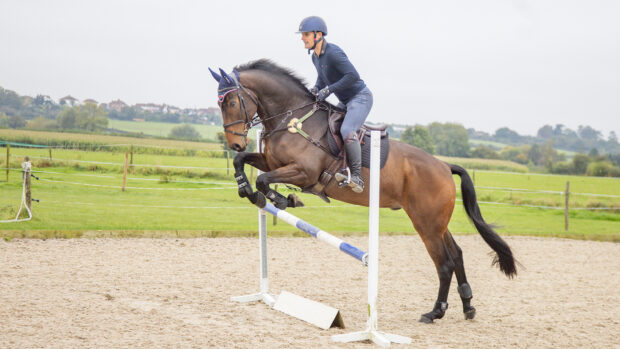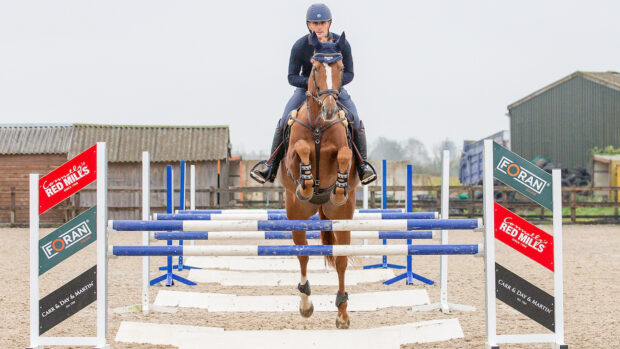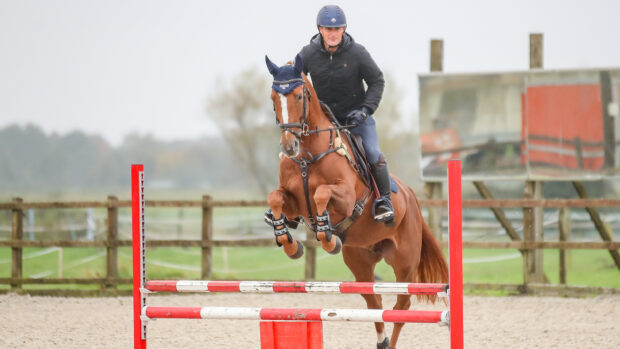Top jumping coach Eric Smiley shares his training ethos and techniques for young horses. Describing the partnership between horse and rider as two individuals who are confident and comfortable with their own roles working towards a common goal, he demonstrated a range of exercises with a group of four- and five-year-old horses at the very start of their career.
Eric’s 14 top takeaways
1. Riders of all levels must allow their horses to make their own decisions when jumping, as even good riders don’t always get it right.
2. Working over a single pole on the ground, notice if the young horse prefers to chip in a short stride or stretch for a long stride. Then remember this is the default that they will return to when things go wrong
3. Encourage the horse to do the opposite in training (long stride/short stride) so they learn to have options
4. Don’t set the horse up when cantering over a pole — allow the horse to make mistakes and learn to adjust its own stride to negotiate the pole
5. When training, riders should focus on the line, but sit quietly and allow the horse to use its own initiative to jump the fence
6. In the last few strides there should be a transfer of responsibility for the jump from the rider to the horse.
7. The rider is responsible for the line and pace of the approach, plus rebalancing on landing. The take off and jump belongs to the horse
8. Guiding rails on the ground 90 degrees to the fence on take off and landing can help with straightness
9. If a horse takes responsibility for the fence too early, ask him to be patient and wait on the approach. On a 5-stride distance ask for a quiet easy 6 strides
10. Keep coming around the turn and don’t interfere on the approach. Let the horse learn and don’t worry about knocking poles at this stage
11. When introducing new questions make sure they are fair, but don’t over prepare the horse. Let him find out it’s an oxer/filler/bounce when he gets there. They need to learn to react and make quick decisions
12. Bounces teach horses to be quick thinking — an essential quality in an event horse
13. Approach a jump from between two other fences so the horse isn’t quite sure which fence he is jumping. This teaches them to ‘look’ for their fences
14. Use a repetitive process to help young horses learn. You may have to repeat an exercise many times but it will be worth it
These training tips were shared with riders and spectators at the International Eventing Forum at Hartpury College (3 February 2014).
Find out how to give a spooky horse confidence going cross-country




